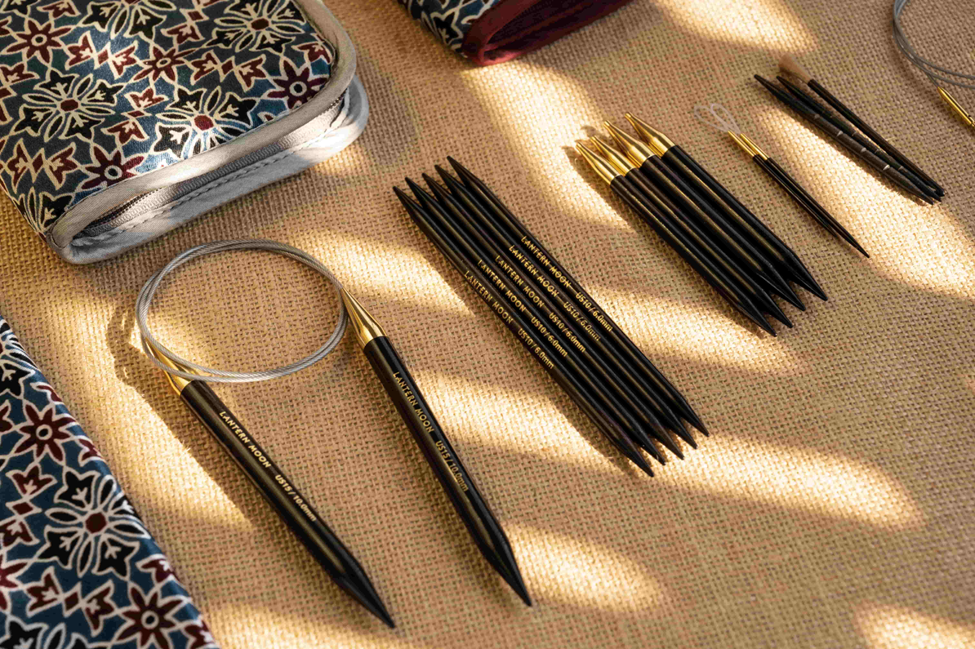Knitting Decreases Lesson: How to Knit3Tog
Knitting decreases are knitting
techniques used in projects to decrease the stitch count from the previous row
or round. For decreases, you do not need special knitting
needles and accessories; just your favorite pair with which you’re
working on your project. K3TOG knit three together is a knitting decrease
commonly featured in lace patterns. The technique decreases two stitches at a
time, drastically reducing the stitch count. In addition to lace knitting, you
can find the instructions in projects such as hats, socks, and sweaters for
proper fit. For a quick knitting lesson on k3Tog, we’ll walk you through the
steps of the decrease in this blog.
K3Tog-
Knit three together
In knitting patterns, when you need to
knit three stitches together, the common abbreviation is knit three together or
k3tog. You basically make three stitches with your knitting needles and knit
them together. This technique makes a sharp decrease, which is generally
required in a lace pattern. Knitting lace patterns requires the careful
placement of decreases that help in the creation of holes that add to the
aesthetic appeal of the design. The technique is often utilized for other
projects, such as socks or hats. It can be confusing if you are a new knitter
and have never done it before, but it can be easily learned. The left-leaning
decrease has a similar counterpart, SSK-
slip slip knit, which can replace k3tog. Always choose the technique that you
are most comfortable with.
You can work on knitting decreases when
you are working back and forth with a pair of single-pointed or circular
needles when you are working with double-pointed
needles or circulars, or even when using special knitting techniques
such as the magic
loop.
When
to K3Tog?
Most knitting patterns instruct when you
need to work a k3tog to decrease. If you need to reduce the stitch count
drastically, you can utilize the technique. This technique will reduce two
stitches at a time. Say for a sharp toe decrease in socks or an asymmetrical
pattern in a shawl or a lace pattern in the collar or edge of a top. For baby
garments that have limited stitch count, you will find a lot of quick
decreases. Similarly, for the crown of hats and beanies just before you join,
there will be many rounds of frequent k3tog decreases. Though garments usually
work with gradual decreases, some patterns with different shapes utilize the
knitting technique.
If a pattern simply asks to reduce your
stitch count without mentioning where to place your decrease, you can plan them
in the beginning, middle or end of a row. This decision is up to you. For
example, if you are knitting
socks on DPNs, placing decreases in the middle and not where the needles
are joined is recommended. This will reduce the chance of dropped stitches and
uncomfortable yarn tension, which may lead to ladders. Also, for rapid
decreases many knitters prefer circular knitting needles as they ergonomic
design is easy on the hands.
Similar to k3tog, you can also work the
technique in a row or round of purl stitches.
How
to K3tog
You work the pattern as instructed, and
when you get to k3tog instruction, you follow these steps.
Step
1: Insert the knitting needle into the next three
stitches as if to knit.
Step
3: Wrap the yarn around the needle from back to front
like when you make knit stitches.
Step
3: Pull the needle through both stitches, bringing it
towards you and through the stitches.
Step
4: Slide the three stitches off the needle.
Step
5: You have now completed a k3tog decrease. This
stitch creates a slanted decrease that leans to the right.
Now, you can apply the decrease in k3tog
knitting in your projects. For smooth crafting sessions and particularly this
technique, precise tips and a smooth needle body are highly preferred. Lantern
Moon’s premium ebony wood knitting needles translate
into finely crafted knit work. The handcrafted knitting needles have a
precision tip that easily goes into smooth knitwork and also works beautifully
with all kinds of yarn without snagging or damaging the fiber. The liquid-silk
finish, a natural characteristic of ebony wood, has an effortless glide for all
types of yarn. The collection also comprises ebony wood crochet hooks and
accessories that assist with all of your crafting needs.




Comments
Post a Comment